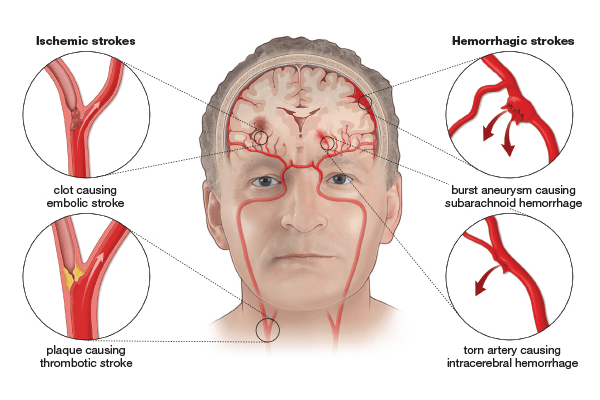 Hemorrhagic Stroke Treatment
Hemorrhagic Stroke Treatment
A hemorrhagic stroke occurs when a weakened blood vessel ruptures and spills blood into brain tissue. The most common cause for the rupture is uncontrolled hypertension (high blood pressure). There are two other types of weakened blood vessels that also cause hemorrhagic stroke: aneurysms and arteriovenous malformations (AVMs).
Endovascular procedures may be used to treat certain hemorrhagic strokes similar to the way the procedure is used for treating an ischemic stroke. These procedures are less invasive than surgical treatments, and involve the use of a catheter introduced through a major artery in the leg or arm, then guided to the aneurysm or AVM. It then deposits a mechanical agent, such as a coil, to prevent rupture.
For strokes caused by a bleed within the brain (hemorrhagic stroke), or by an abnormal tangle of blood vessels (AVM), surgical treatment may be done to stop the bleeding. If the bleed is caused by a ruptured aneurysm (swelling of the vessel that breaks), a metal clip may be placed surgically at the base of the aneurysm to secure it.



